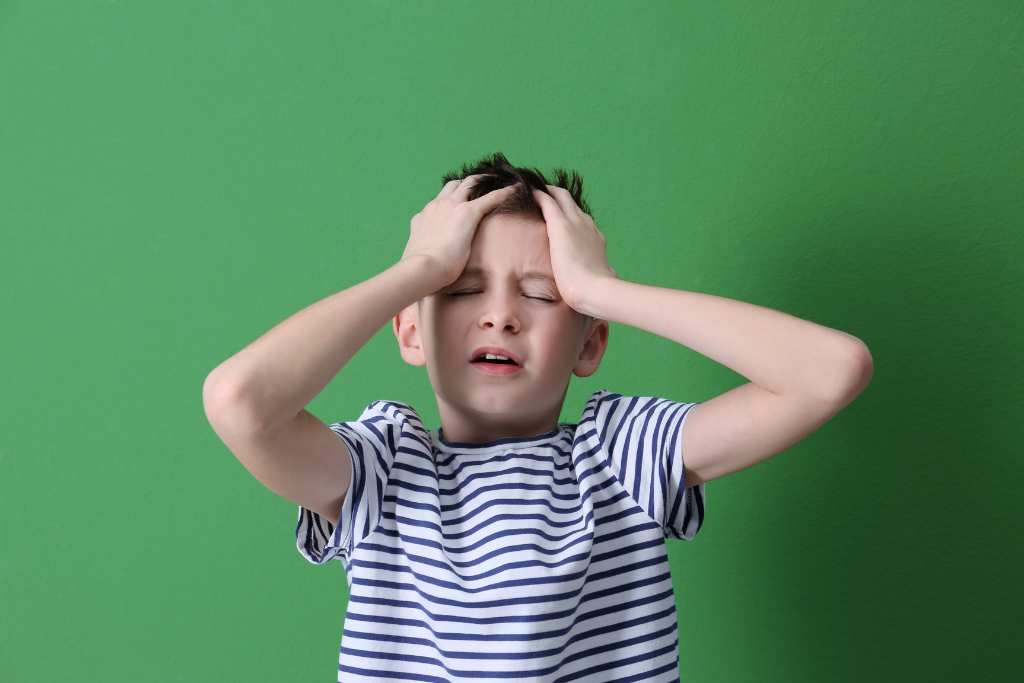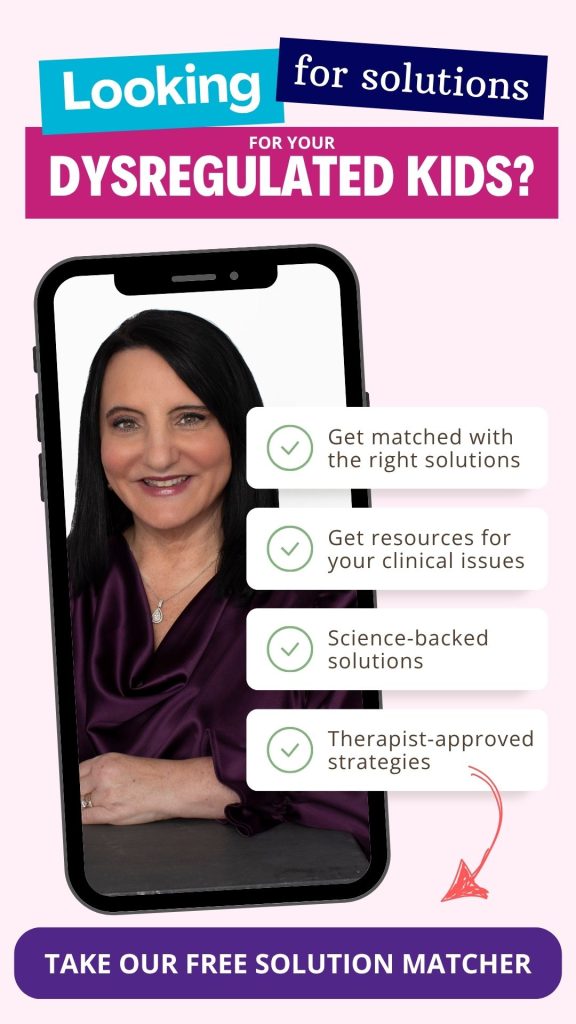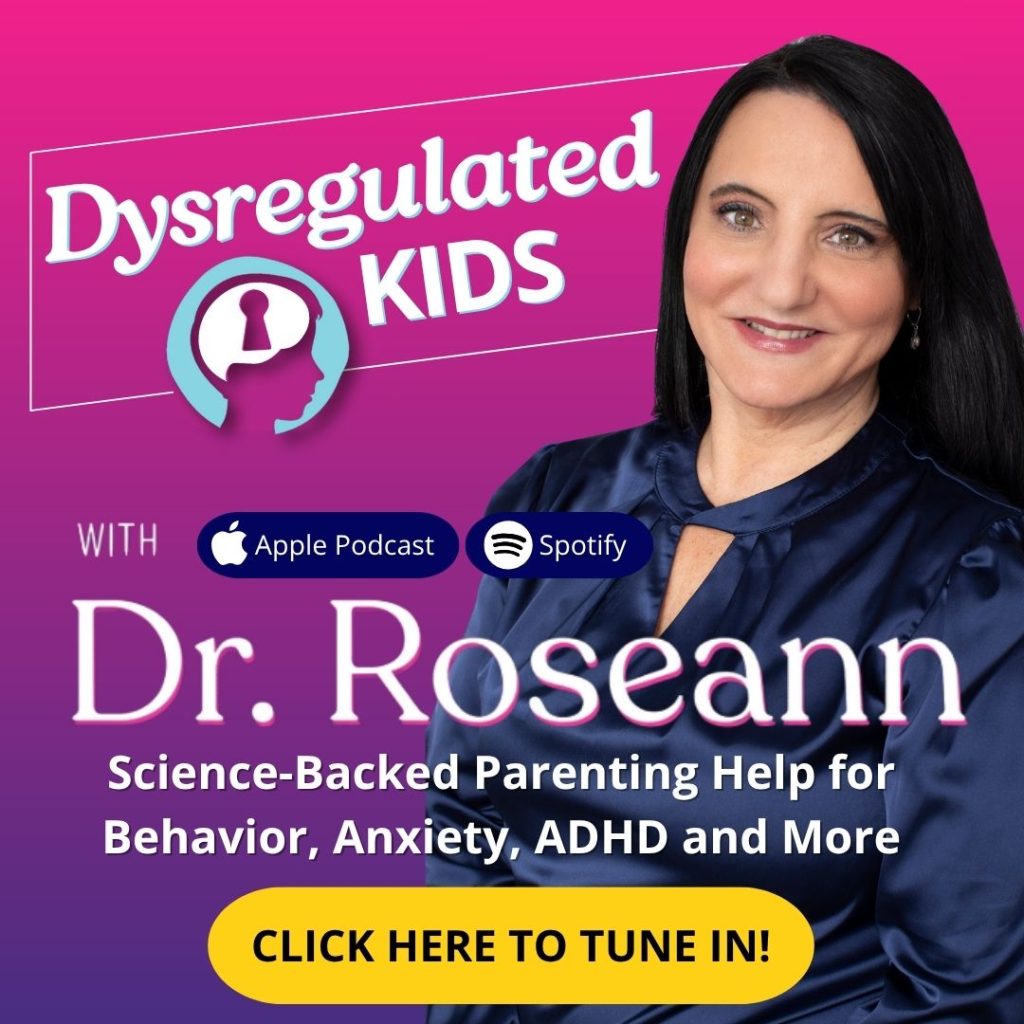Estimated reading time: 10 minutes
Parents often want quick relief but naturally worry about medication risks. While ADHD and mood meds can help some kids, they also carry real side effects families deserve to understand.
In this guide, I’ll break down the risks, emotional costs, and long-term concerns—while also sharing safer, natural ways to calm the brain first. Because behavior is communication, and regulation is always the solution.
Key Takeaways
- The dangers of medication are real: side effects, emotional changes, and dependency risks.
- Medication isn’t always necessary—natural tools can calm the brain without long-term harm.
- Behavior is communication. Regulation First Parenting™ helps you decode and support your child.
- You have options. You don’t have to choose between chaos and medication.
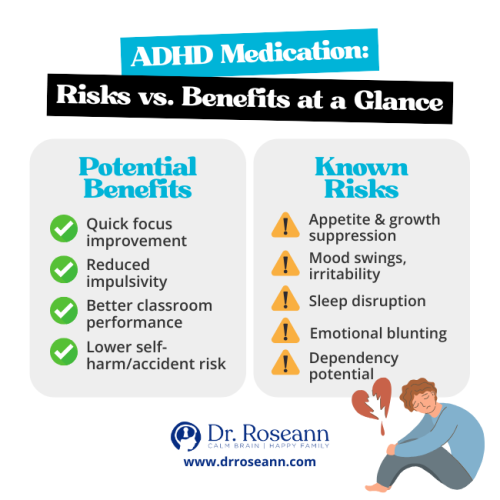
The Dangers of Medication: Side Effects and Alternatives
Medication may feel like the fastest route to relief—but it’s important for parents to understand the risks. The American Academy of Pediatrics (2019) notes that psychiatric medications can affect:
- mood
- sleep
- appetite
- growth
- long-term brain development
Jahan and Loehr (2024) highlight stimulant-related appetite suppression and the need to carefully monitor growth.
Common dangers of medication in children include:
- Sleep disruption (difficulty falling or staying asleep)
- Appetite suppression leading to growth concerns
- Mood swings or increased irritability
- Heightened anxiety or emotional lability
- Potential dependency or misuse (especially with stimulants)
Alternatives many families find helpful:
- Nervous system regulation: neurofeedback, CALM PEMF™, sensory interventions
- Lifestyle supports: diet, movement, consistent sleep
- Supplements: magnesium, omega-3s, B vitamins (with guidance from resources like the National Center for Complementary and Integrative Health, 2023)
- Regulation First Parenting™ strategies: Regulate → Connect → Correct
Always talk with your child’s clinician before making changes. These choices deserve careful monitoring—and should start with regulation and safety first.
5 Reasons Why You Shouldn’t Medicate Your Child With ADHD
Medication often manages symptoms, not root causes. That’s why many families choose not to medicate.
- Masking, not solving. Meds may quiet behaviors, but they don’t fix the dysregulated brain beneath.
- Side effects can outweigh benefits. Irritability, appetite loss, or emotional changes are common. Research (Zhang et al., 2024) shows that ADHD medications—even in short-term trials—can raise heart rate and blood pressure.
- Short-term relief, long-term cost. Benefits often fade, while risks may grow over time.
- Dependency risk. Especially with stimulants. Reviews (Noah et al., 2025) highlight the potential for abuse or dependence when used at high doses or misused.
- Safer options exist. Regulation tools can calm the brain naturally—without side effects.
Parent Story:
Emily, mom of a 10-year-old with ADHD, shared: “The medication made him sit still in school, but at home, the meltdowns were worse. Once we focused on regulating his brain, his calm came naturally—without the rollercoaster.”
SSRI Medication Side Effects on Children
SSRIs (like Prozac, Zoloft, or Lexapro) are often prescribed for anxiety or depression in children—but they’re not without risk. Parents deserve to know what to watch for.
Common SSRI side effects in kids include:
- Suicidal thoughts or behaviors
The FDA requires a black box warning. Research by Schetz et al. (2024) shows age-dependent risks, including suicidal ideation and attempts.
- Headaches and stomach upset
Strawn et al. (2018) found that side effects often vary by medication class and dose in pediatric populations.
- Sleep problems
Higher doses can increase the risk of sleep disturbances (Strawn et al., 2018).
- Emotional numbness or “flat affect”
Some children report feeling disconnected or like their sparkle is gone while on SSRIs.
If your child seems different—more withdrawn, flat, or restless—it may be the medication, not your parenting. Always bring these changes to your provider’s attention.
How Addictive is Adderall?
Adderall is widely prescribed for ADHD—but its addictive potential is real. Parents often don’t hear the full picture.
Why parents should be aware:
- High misuse rates
Teens and young adults sometimes misuse Adderall for studying or weight loss. Research by McCabe et al. (2023) shows that misuse rises in schools with higher ADHD prescription rates.
- Dependence risk
The brain can adapt, meaning kids may need higher doses over time. Francis et al. (2021) found that frequent nonmedical use among college students with ADHD correlated with tolerance and dependence.
- Withdrawal effects
Stopping can trigger fatigue, irritability, depression, insomnia, or exhaustion—even after short-term use (Bahji, Danilewitz, & Crockford, 2023).
Parent Scenario
A high schooler began taking extra pills to stay up late studying—only to face worsening mood crashes and emotional spirals.
If your child seems to be crashing emotionally or using medication outside of prescribed doses, it’s a signal their nervous system is in distress. Behavior is communication—pause and talk with their provider so you can start with regulation and safety first.
ADHD Drugs and Emotional Lability: Can They Cause Mood Swings and Aggression?
Yes—many parents notice personality changes after starting medication. It can feel unsettling when your child suddenly seems “different.”
Red flags to watch for:
- Sudden irritability or aggression
Research (Zhang et al., 2024) shows stimulants like methylphenidate can increase irritability, aggression, and emotional instability in some children.
- Tearfulness or crying spells
Emotional dysregulation and depressive symptoms often mediate how children with ADHD act out (Marques et al., 2024).
- Emotional “numbness” or flat affect
Some kids describe feeling disconnected or like their sparkle is gone.
If your child feels “like a different kid” on medication, that’s not your imagination—it’s a sign their nervous system is being pushed beyond balance. Behavior is communication, and this shift is your child’s way of telling you something isn’t working.
What Does Adderall Feel Like with ADHD Medication?
Parents often wonder what their child actually experiences on Adderall. The answer depends on whether ADHD is truly present.
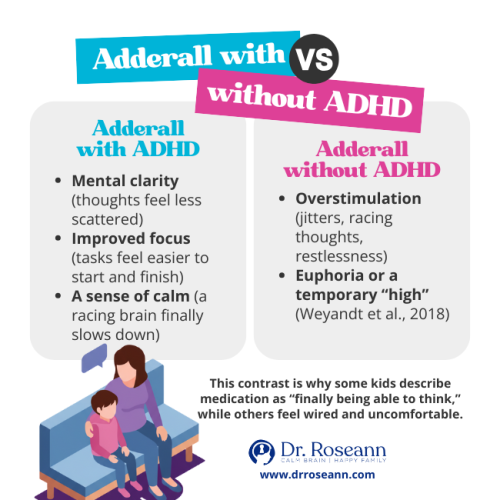
For kids with ADHD, Adderall may bring:
- Mental clarity (thoughts feel less scattered)
- Improved focus (tasks feel easier to start and finish)
- A sense of calm (a racing brain finally slows down)
For kids without ADHD, Adderall can feel very different:
- Overstimulation (jitters, racing thoughts, restlessness)
- Euphoria or a temporary “high” (Weyandt et al., 2018)
This contrast is why some kids describe medication as “finally being able to think,” while others feel wired and uncomfortable.
ADHD Medication for Kids: Weighing the Risks vs Benefits
Parents often see changes almost overnight when their child starts ADHD medication. Focus sharpens, impulse control feels stronger, and classrooms suddenly don’t seem like such a battlefield. Yet every quick win deserves a pause and a closer look.
Benefits parents may notice:
- Quick relief of focus and impulse issues
Research shows ADHD meds can improve attention and reduce impulsivity in youth (Bellato et al., 2025).
- Better classroom functioning
Li et al. (2024) found that medication is linked to lower risks of self-harm, accidents, and other negative outcomes.
- Improved task follow-through and organization
Some kids find it easier to start and finish homework or chores.
Risks to consider:
- Side effects
Appetite loss, mood changes, and sleep disruption are common (Silczuk, 2025).
- Emotional blunting
Some children lose their spark, showing reduced spontaneity or flat affect (Silczuk, 2025).
- Dependency potential
With rising prescriptions, Li et al. (2024) warn about the need for close monitoring to prevent misuse.
ADHD medications can offer short-term relief, but parents must weigh the benefits against side effects and long-term concerns. Remember—behavior is communication, and true change begins when we calm the brain first.
How to Overcome ADHD Without Medication
The good news? Calm can be built without meds. Many parents feel like they’ve tried everything, yet brain-based tools exist that bring real change—without the side effects.
Natural supports that work:
| Neurofeedback & QEEG mapping | Helps retrain brainwaves toward focus and calm |
| Nutrition | Stabilizes blood sugar and adding nutrients like omega-3s and magnesium |
| Sleep hygiene | Structured bedtime routines plus sleep interventions reduce ADHD symptoms and improve quality of life (Larsson et al., 2023) |
| Movement & sensory input | Daily exercise and sensory breaks help reduce meltdowns (Alvstrand et al., 2025) |
| Regulation First Parenting™ | Regulate → Connect → Correct |
Case example
Liam, age 9, struggled with focus and meltdowns. Through brain-based supports and parental co-regulation, his teacher reported: “He’s finally able to sit, listen, and learn—without meds.”
When we calm the brain first, everything else—learning, behavior, connection—finally falls into place.
15 Side Effects of ADHD Medication
ADHD medications can help some kids, but they carry risks or side effects every parent should know. Have you noticed sudden appetite dips or unexpected weight changes?
Research backs up what many parents already see at home.
- Cascade, Kalali, and Wigal (2010) found these shifts can quietly sneak into daily life, turning meals into stress zones.
- Sleep might stretch thin while moods swing like a pendulum. Mechler et al. (2021) reported insomnia, irritability, headaches, and slowed growth in some children. It can feel relentless, leaving both child and parent drained.
- Then there are the stomach aches, tearful moments, emotional flattening, anxiety spikes, or tics that Nanda et al. (2023) observed. Sometimes behaviors seem to appear from nowhere, almost like the brain is sending urgent signals.
- Heart rate changes, blood pressure shifts, and risks of misuse show up too, Schein and colleagues (2022) remind us.
This isn’t about blame. Your child’s nervous system is talking, waving a flag, and asking for support.
Remember: Behavior is communication. Calm the brain first, everything else—learning, focus, connection—falls into place.
Overprescription of ADHD Medication: A Critical Examination
ADHD medications are flying off shelves faster than ever, even when a child’s nervous system dysregulation hasn’t been addressed. Feels like schools and doctors sometimes reach for a “quick fix,” right?
Li et al. (2025) found prescriptions surged from 2006 to 2020, raising red flags about overdiagnosis.
- Sometimes ADHD-like behavior is really a brain reacting to anxiety, trauma, or sensory overload.
- Parents chase labels hoping a pill will solve everything, yet underlying causes quietly persist beneath the surface. That’s why so many parents tell me they feel stuck in a cycle of trial-and-error, without ever really getting to the root of what their child’s brain needs.
Read more: Overprescription of ADHD Medication
Natural supports—neurofeedback, movement, nutrition—remain hard to access. Meds can calm symptoms fast, but lasting regulation takes more than a prescription.
If you’ve ever felt nudged toward medication before exploring other options, know you’re not alone—it doesn’t signal failure. Behavior is communication, not defiance.
Calm the brain first, and focus, learning, and connection fall naturally into place.
Are ADHD Drugs Safe? Evaluating Risks, Benefits, and Long-Term Effects
Every child’s brain and body respond differently. That’s why no two children should be treated the same—your child’s nervous system has its own story.
Safety depends on:
- Child’s unique brain and body
- Dose and monitoring
- Long-term use risks
- growth
- dependency
- emotional effects
ADHD medications can provide quick relief, but true safety comes from addressing underlying dysregulation—not just masking symptoms.
Zhang et al. (2024) highlight the importance of tracking cardiovascular signs and other subtle physiological changes during treatment, because small signals can point to larger concerns.
Read more: Are ADHD Drugs Safe?
If you feel overwhelmed, remember—you’re not failing. Strategies only work when the brain is calm. Once you focus on regulation, everything becomes easier.
Frequently Asked Questions
Are ADHD medications safe long-term?
They can help some children but carry risks like growth suppression, mood issues, and dependency. Careful monitoring is essential.
Do all kids experience side effects?
No, but many do. Some effects are mild, while others (like aggression or emotional blunting) can be concerning.
Can I stop my child’s medication suddenly?
Never stop abruptly. Always consult your provider to taper safely.
What’s the first step if I don’t want medication?
Start with nervous system regulation: sleep, nutrition, movement, and brain-based supports like neurofeedback.
How do I talk to my child’s doctor about my concerns?
Be direct: ask about side effects, alternatives, and whether regulation-first strategies could be tried before or alongside medication.
Citations
Alvstrand, M., Lönn, M., Svedberg, P., Nygren, & Larsson, I. (2025). Facilitating sleep initiation in children with ADHD and sleep problems: a qualitative experience-based study. BMC pediatrics, 25(1), 609. https://doi.org/10.1186/s12887-025-05964-3
American Academy of Pediatrics. (2019). Clinical practice guideline for the diagnosis, evaluation, and treatment of attention-deficit/hyperactivity disorder in children and adolescents. Pediatrics, 144(4), e20192528. https://doi.org/10.1542/peds.2019-2528
Bahji, A., Danilewitz, M., & Crockford, D. (2023). Navigating Evidence, Challenges, and Caution in the Treatment of Stimulant Use Disorders. Brain sciences, 13(10), 1416. https://doi.org/10.3390/brainsci13101416
Bellato, A., Perrott, N. J., Marzulli, L., Parlatini, V., Coghill, D., & Cortese, S. (2025). Systematic Review and Meta-Analysis: Effects of Pharmacological Treatment for Attention-Deficit/Hyperactivity Disorder on Quality of Life. Journal of the American Academy of Child and Adolescent Psychiatry, 64(3), 346–361. https://doi.org/10.1016/j.jaac.2024.05.023
Francis, A. R., Weyandt, L. L., Anastopoulos, A. D., DuPaul, G. J., & Shepard, E. (2022). Outcomes and Predictors of Stimulant Misuse in College Students with and Without ADHD. Journal of attention disorders, 26(5), 779–793. https://doi.org/10.1177/10870547211027650
Jahan, S., & Loehr, M. M. (2024). Managing growth deceleration associated with attention-deficit/hyperactivity disorder and stimulant-induced appetite suppression. Journal of the American Academy of Child and Adolescent Psychiatry, 63(12), 1251–1254. https://doi.org/10.1016/j.jaac.2024.03.001
Larsson, I., Aili, K., Lönn, M., Svedberg, P., Nygren, J. M., Ivarsson, A., & Johansson, P. (2023). Sleep interventions for children with attention deficit hyperactivity disorder (ADHD): A systematic literature review. Sleep medicine, 102, 64–75. https://doi.org/10.1016/j.sleep.2022.12.021
Li, L., Coghill, D., Sjölander, A., Yao, H., Zhang, L., Kuja-Halkola, R., Brikell, I., Lichtenstein, P., D’Onofrio, B. M., Larsson, H., & Chang, Z. (2025). Increased Prescribing of Attention-Deficit/Hyperactivity Disorder Medication and Real-World Outcomes Over Time. JAMA psychiatry, 82(8), 830–837. https://doi.org/10.1001/jamapsychiatry.2025.1281
Marques, S., Correia-de-Sá, T., Guardiano, M., Sampaio-Maia, B., & Ferreira-Gomes, J. (2024). Emotion dysregulation and depressive symptoms mediate the association between inhibitory control difficulties and aggressive behaviour in children with ADHD. Frontiers in psychiatry, 15, 1329401. https://doi.org/10.3389/fpsyt.2024.1329401
McCabe, S. E., Schulenberg, J. E., Wilens, T. E., Schepis, T. S., McCabe, V. V., & Veliz, P. T. (2023). Prescription stimulant medical and nonmedical use among US secondary school students, 2005 to 2020. JAMA Network Open, 6(4), e238707. https://doi.org/10.1001/jamanetworkopen.2023.8707
National Center for Complementary and Integrative Health. (2023, August). ADHD and complementary health approaches: What the science says. U.S. Department of Health and Human Services. https://www.nccih.nih.gov/health/providers/digest/adhd-and-complementary-health-approaches-science
Noah, A. A., & Sedky, H. E. (2025). New frontiers in pharmacological treatment of attention-deficit hyperactivity disorder. Naunyn-Schmiedeberg’s archives of pharmacology, 10.1007/s00210-025-04328-z. Advance online publication. https://doi.org/10.1007/s00210-025-04328-z
Schetz, D., Sein Anand, J., Sein Anand, Ł., & Kocić, I. (2024). Age-Dependent Analysis of Suicidal Ideation, Suicide Attempts, and Suicides Associated with SSRI and SNRI Drugs Based on Pharmacovigilance Data. Pharmaceuticals (Basel, Switzerland), 17(12), 1714. https://doi.org/10.3390/ph17121714
Silczuk, A., Lewandowska, A., Filip, M., Atroszko, P. A., Podolec, J., Gałecka, M., Madejek, R., & Czyżewski, Ł. (2025). Current insights into the safety and adverse effects of methylphenidate in children, adolescents, and adults – narrative review. Pharmacological reports : PR, 10.1007/s43440-025-00763-0. Advance online publication. https://doi.org/10.1007/s43440-025-00763-0
Strawn, J. R., Mills, J. A., Sauley, B. A., & Welge, J. A. (2018). The Impact of Antidepressant Dose and Class on Treatment Response in Pediatric Anxiety Disorders: A Meta-Analysis. Journal of the American Academy of Child and Adolescent Psychiatry, 57(4), 235–244.e2. https://doi.org/10.1016/j.jaac.2018.01.015
Weyandt, L. L., White, T. L., Gudmundsdottir, B. G., Nitenson, A. Z., Rathkey, E. S., De Leon, K. A., & Bjorn, S. A. (2018). Neurocognitive, Autonomic, and Mood Effects of Adderall: A Pilot Study of Healthy College Students. Pharmacy (Basel, Switzerland), 6(3), 58. https://doi.org/10.3390/pharmacy6030058
Zhang, L., Li, L., Andell, P., Garcia-Argibay, M., Quinn, P. D., D’Onofrio, B. M., Brikell, I., Kuja-Halkola, R., Lichtenstein, P., Johnell, K., Larsson, H., & Chang, Z. (2024). Attention-Deficit/Hyperactivity Disorder Medications and Long-Term Risk of Cardiovascular Diseases. JAMA psychiatry, 81(2), 178–187. https://doi.org/10.1001/jamapsychiatry.2023.4294
Zhang, Y., Yin, L., You, C., Liu, C., Dong, P., Xu, X., & Zhang, K. (2024). Efficacy and Safety of Methylphenidate and Atomoxetine in Medication-Naive Children with Attention-Deficit Hyperactivity Disorder in a Real-World Setting. Drugs in R&D, 24(1), 29–39. https://doi.org/10.1007/s40268-023-00445-3
Always remember… “Calm Brain, Happy Family™”
Are you looking for SOLUTIONS for your struggling child or teen?
Dr. Roseann and her team are all about science-backed solutions, so you are in the right place!

